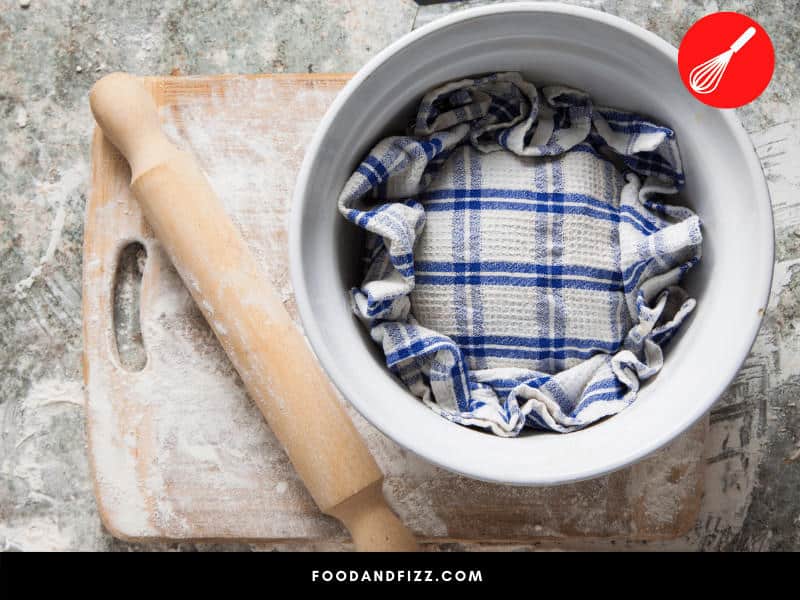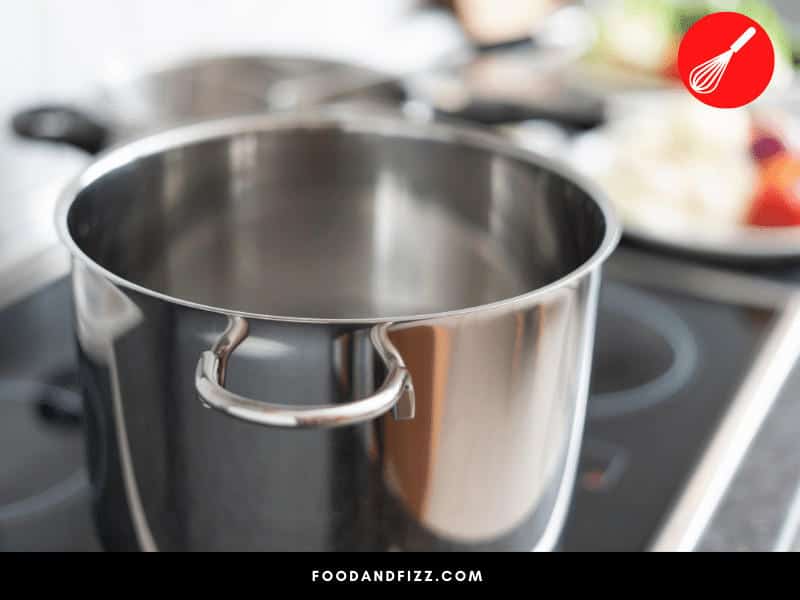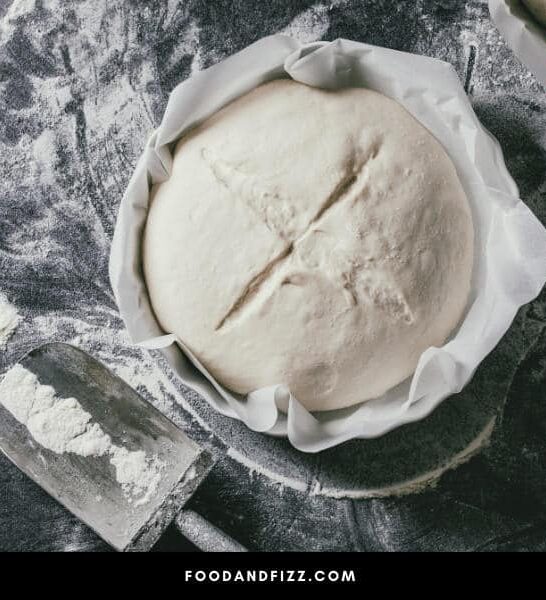Nothing warms my soul in the morning like the smell of baked goodies and a cup of freshly brewed coffee. But before getting to that part, I need the perfect dough.
This means ensuring the dough is covered correctly to rise before baking. But what is the right tool to cover the dough with?
What To Cover Rising Dough With?
The best cover for rising dough is plastic wrap. It will trap all the moisture, ensuring the dough rises beautifully. I also like spraying the plastic wrap with a bit of oil to ensure the dough does not stick to it. However, if you are one of our environmentally conscious friends who stays away from anything plastic, you can use a damp towel. It will work fine as well.

Why Does Dough Need to Be Covered?
Almost all recipes I have encountered that involve using dough insist on covering it after kneading. Why is this important?
The main reason is to ensure the surface does not dry out. This will ensure you have a smooth dough that stretches and gives your baked goods a nice texture.
The other reason is to protect the dough from dust, debris, flies, and any other contaminants that may be around the atmosphere.

What Other Alternatives Can You Use Besides a Plastic Wrap?
For most people, the go-to cover is plastic wrap. But that is not the only solution. Here are some other common alternatives.
Damp Kitchen Towel
As a baking enthusiast, I have come across several recipes suggesting I use a damp kitchen towel. The moisture in the towel prevents the air on top of the dough from becoming dry.
Simply soak your towel, squeeze out any excess water and place it on top of your container. Leave enough space between the dough and the towel so that when the dough rises, it will not stick to your towel.

Dinner Plate
A dinner plate or anything flat can also cover your rising dough. The plate should cover the container tightly to prevent the dough from drying out.
If you go with something that does not fit well, you risk dry dough that will be hard to stretch.
Lidded Containers
If you have a plastic or glass container with a fitting lid, use it. It will allow your dough to rise perfectly.
But first, oil your container so that the dough does not stick on the side, giving you a hard time when getting it out.
Plastic Bags
If there are plastic carrier bags around your home, you can also use them to create the right conditions for the dough to rise correctly. Ensure that the plastic bag is clean, then place your container inside and seal it.
The bag should be slightly inflated so that even when the dough rises, it will not get into contact with it. You can use a rubber band or clip to seal the bag.
Food-Safe Ziplock Bag
I find a zip lock bag to be very effective in protecting the dough from dry air. Just ensure you oil the bag first so that the dough does not stick.
Another advantage of zip lock bags is that you can use them multiple times. Clean it and store it for the next time you are making bread or pizza.
Since the dough will produce some gases as it rises, you may have to open the zip lock bag several times to allow air to escape. Otherwise, it might burst.
Plastic Shower Cap
A shower cap is just like plastic wrap. It is readily available in many stores, and you can get one for this purpose.
Just like plastic wrap, ensure you grease your dough, then cover your container with a shower cap. The elastic band ensures that the container remains sealed so that the dough does not dry out.
And the good thing is that you can use it many times before it eventually wears off.
Using a Large Pot
You can also cover your dough with a large pot. Simply overturn it so that it covers the whole dough.
However, I would only recommend this method as a last resort. That is because the pot prevents you from seeing when the dough has risen.
And if you keep turning the pot to check, you will be interfering with the rising process.

What Makes a Good Dough Cover?
Whatever cover you use, it should be effective in trapping humidity. If it allows moisture to escape, you risk your dough drying out quickly.
However, ensure that the cover is not completely airtight. As the dough rises, it is also releasing CO2 gas. And if the gas does not escape, it will build-up, and the cover will eventually pop.
If this happens, moisture will not be retained properly, and the dough could dry out. The opening for the gas to escape does not have to be large. Just something as tiny as a pinprick.
As the dough rises, there is a possibility that it can come into contact with your cover. You need a cover that will not allow the dough to stick.
However, you can always overlook this feature in a cover. That is because greasing a dough ensures that it does not stick to the container.
What Is the Best Cover for Longer Bulk Rises?
When you are leaving your dough to rise for an extended period, I do not recommend using a tea towel. The towel will eventually dry out, exposing your dough to dry air.
But if you are only covering the dough for a couple of hours, this is a good choice.
I recommend using plastic wrap or lid if you plan to leave the dough to rise for a more extended period.

Why Is Choosing the Right Cover Important?
The right cover for your dough will ensure that dry air does not come into contact with your dough, as this could result in a tough crust.
Usually, this can take as little as 20 minutes, depending on how humid the air around your home is. If your environment is too dry, then your dough will dry out in a shorter time.
A damp towel works perfectly because it protects the dough from draft. The moisture ensures that the dough remains in a humid environment.
But that does not mean the other suggestions I have made will not work. The goal is to ensure that your dough is not exposed to dry air.
Final Thoughts on What to Cover Rising Dough With?
Frequently Asked Questions on What To Cover Rising Dough With?
At the end of the day, you have to go with a cover that is readily available and meets your needs. As long as you ensure that your dough has been covered properly, your end product will have the desired texture you are looking for.
Can You Wrap the Dough In Aluminum Foil?
Aluminum foil is also effective. But first, grease it with oil, then wrap your dough inside and give it time. You can also cover your container with the dough using aluminum foil.
Can Dough Rise Without Covering?
Not exactly. When you do not cover your dough well, the surface will dry out, and this limits the rise. This can also affect the texture of your baked goods.
Between Plastic Wrap and a Wet towel, which One is the Better Cover?
Both products are effective in covering the dough. They will prevent the dough from drying out and allow the dough to rise well. So when it comes down to these two, it is all about your preference.

